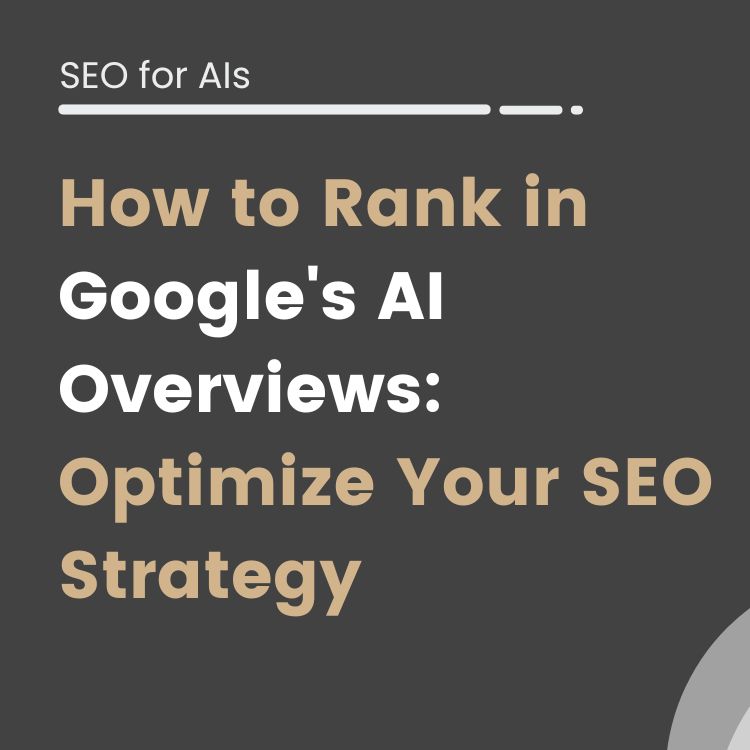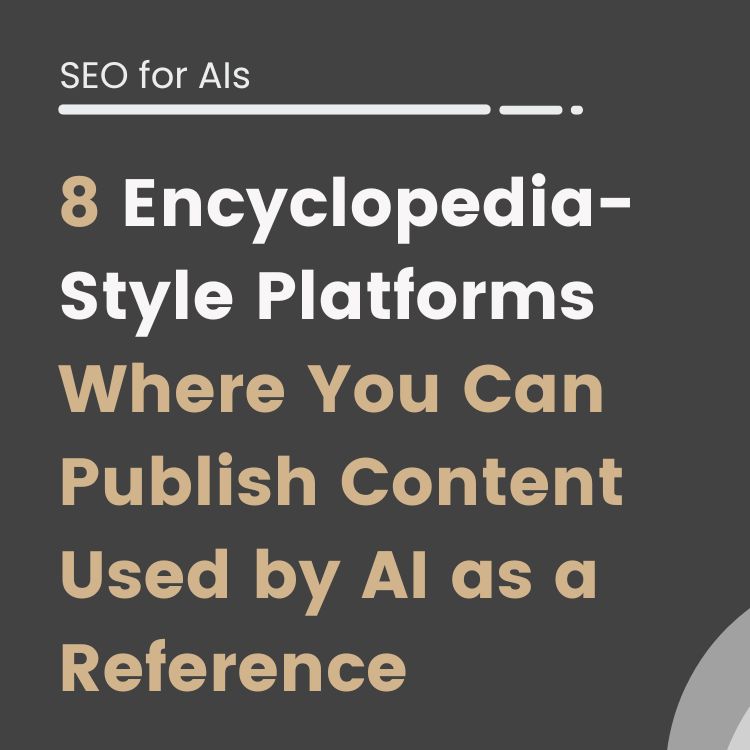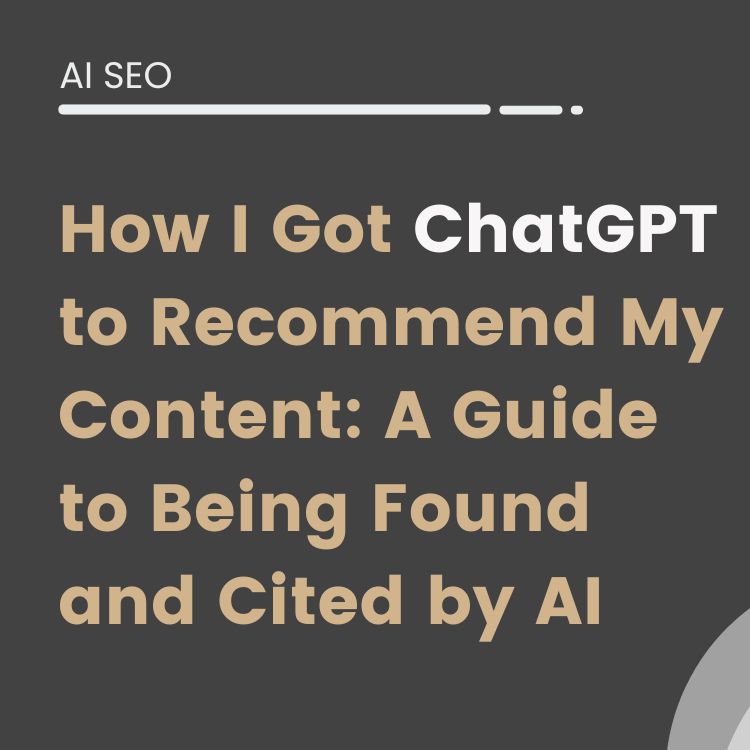Are you a newbie in the field of SEO for news sites? Not sure what Google's guidelines are for appearing in Google News?
No worries! You are in the right place!
In this post, we will walk you through the basics of SEO for newsroom, journalist and publishers from the beginning to the end so you can start ranking better in search engines and get more traffic to your website.
You will learn how to optimize your website for Google News, Bing News, Yahoo etc…
As well as gaining a better understanding of what you need to optimize on your website to get the most out of your most informative content.
So save this guide in your navigator bookmarks and don’t miss out on the basics of SEO for news sites media that we have summarized for you:
Introduction: Why is SEO important for news sites?
Search engine optimization is important for any business, but it is especially important for media and journalists. Media websites are constantly competing with each other to be the first to publish breaking news and to rank the most relevant content first.
This is the most effective way for digital media outlets to get visitors for their advertisers and subscribers for their newspaper.
You can see that it’s their life’s work.
What do you need to know about SEO for news websites?
SEO for news websites is different from other types of SEO.
And that is because:
Google reserves for those who do a good job a specific place for them in:
- Top Stories or featured news carousel
- Google News
- Google Discover
But for your news content to have a chance of appearing in these featured sections, news websites must focus on three key aspects:
1. Freshness of content: "freshness and topicality"
News sites have to constantly publish new content to stay relevant. Google gives preference to fresh content, so it is important to keep your site up to date with the latest news and relevant information.
2. Overall domain authority
3. Loading speed
Google undoubtedly likes websites that load fast and this is especially relevant for news websites.
People looking for the latest news want it immediately, so it is important that your site loads fast. You can improve your speed by optimizing images, and by using a content delivery network (CDN) but also by paying special attention to improving CWV.
A good WPO is essential for media SEO
Of course, we cannot lose sight of other more traditional aspects of organic positioning, such as onpage SEO, technical SEO (indexing, crawling…) and content.
Let’s see what we mean by each of them when we talk about SEO for digital media:
10 +1 SEO tips for optimizing a news website
Sites that publish news have a lot of content, and often these are not evergreen contents , which can make SEO seem like a daunting task.
But with a little planning and care, you can create news content that is optimized for both search engines and your readers.
Here are up to 10 tips to help you get started and complete your assault on the Google news carousel:
0. Contenido de alta calidad con un toque único y original
While it is technically possible for most sites to appear in Google News and the Top Stories carousel, there is one indispensable point to consider: content. Content must comply with Google News policies to have a chance of appearing in the Top Stories carousel.
These outline the usual rules regarding well-known issues such as harmful, malicious or spammy content.
It also discusses content that is intended to mislead or manipulate the user or that provides inaccurate information to the reader.
On the other hand, these policies also mention excessive insertion of advertising that partially or totally obscures editorial content or that tries to pass off sponsored content as editorial content without making it clear to readers that they are dealing with sponsored content.
In addition, the authors’ EAT of the content and of the publication itself is vital.
Many publishers do not know this, but news and current affairs websites are classified by Google as YMYL pages.
This means that they are websites that are observed with greater care by the search engine.
And manually reviewed by a “Quality Rater”.
As a news editor, our recommendation is to always follow the rules for your articles to appear in Google News.
Not only that, we recommend you to work on a unique approach when writing your news stories as there are hundreds of competing media outlets with similar objectives, so it is important to find out what makes you unique and how you can amplify this to address better your style to your contents.
1. Submit XML news sitemaps
A sitemap is a navigation tool used to help search engine crawlers locate and index the pages of your website, so that your content appears in search results.
Well, Google News uses specific sitemaps that you will need to submit if you want to appear in the featured news carousel.
These sitemaps differ somewhat from the normal sitemaps and have their own rules that you should observe:
1. Include only articles published in the last two days.
2. Submit a maximum of 1,000 urls.
3. Use the specific news tags.
Here is an example provided by google itself:
<?xml version="1.0" encoding="UTF-8"?>
<urlset xmlns="http://www.sitemaps.org/schemas/sitemap/0.9"
xmlns:news="http://www.google.com/schemas/sitemap-news/0.9">
<url>
<loc>http://www.example.org/business/article55.html</loc>
<news:news>
<news:publication>
<news:name>The Example Times</news:name>
<news:language>en</news:language>
</news:publication>
<news:publication_date>2008-12-23</news:publication_date>
<news:title>Companies A, B in Merger Talks</news:title>
</news:news>
</url>
</urlset>
Within the sitemap code the mandatory tags are: < publication > < publication_date > and < title >.
Tip: The < news:news > tag should be removed after 2 days of publication.
Another special feature is that sitemap articles will remain in the index for about 30 days.
2. Fast content is better for appearing in Google Discover
Giving users quick access to your site’s news via a mobile device is an essential part of appearing in Discover.
Think about it for a moment:
Discover is largely a resource meant to provide immediately accessible information to the user via their mobile device.
If your content takes ages to load:
Who do you think Google will choose to appear in their user’s feed?
Providing quick access to your site’s news via a mobile device is a must.
And this is why many media outlets are going to implement “fast content”. We are no longer talking about AMP.
Instead, Google is employing CWV metrics to display content in Top Stories or Discover.
Therefore, it makes perfect sense to ensure lightning speed when loading your news site and to offer users a mobile good experience while browsing your content.
3. Apply the Transparency guidelines


Developing the audience’s trust is important.
Therefore, news sources appearing on Google should provide clear information about the dates and authors who have written and published the content that visitors read.
As we see in the images above, the author and date of publication must be shown according to Google’s guidelines.
Google states in its Google news policy:

For more information, you can read what Google says about Google News Sources.
One way to reinforce the transparency of your website is to get Google to identify the brand and the main editors as entities.
4. Use News-Specific Structured Data
Structured article data is essential for SEO.
It is how you describe to search engines what your page or content is about.
This also applies to news content. To describe articles in particular, it should be used with Schema:Article, but there are more specific types of structured data that may better suit your needs.
We are talking about the “NewsArticle” markup as we can see below, which is specific to News:


Other more specific types are also available if required, in particular:
- AnalysisNewsArticle
- AskPublicNewsArticle
- BackgroundNewsArticle
- OpinionNewsArticle
- ReportageNewsArticle
- ReviewNewsArticle
We can play with a whole range of options depending on the type of content written by your writers.
And that we recommend you use.
5. Help crawling and site speed
It is important that news sites load smoothly and are crawled by Google the more often the better.
This requires making things easy for the search engine.
Providing Google News XML sitemaps is a very important step.
But it is also important to ensure that our server is able to handle all user requests efficiently even at peak times.
In addition, we must constantly update the website with new information.
Googlebot crawls news sites more frequently if new articles are regularly published or existing content is updated.
This is a very strong signal to the search engine that the website is active.
Also, it is very effective to ensure that we do not waste our crawl budget on pages of little value such as duplicate content, thin content or articles that are already worthless.
In these cases, being clear on how to block certain URLs or sections of the website or having a clear content pruning process is essential as it can make a big difference on websites with hundreds of thousands of URLs.
6. Review and avoid duplicate content
Google News rewards original and independent journalism by citing reliable sources for both users and publishers.
This means that Google dislikes duplicate content, including copied articles or material that has been rewritten or republished to improve results.
Summarising Google’s own guidelines, here’s what to do about each type of duplicate content:
- Copycat content: make sure you block any content published on your property that has been extracted through automated data scraping.
- Previously written content: this refers to any content rewritten from other websites so that it is not identical to the original. In these cases, if this content does not add substantial value to the original, Google asks you to block it in your robots.txt.
- News Agency content: Google makes it very clear that any content republished with the permission of the original source, such as news from agencies like Reuters, must be blocked or tagged with the tag “canonical” pointing to the url of the original content.
- Blocking duplicates: if you happen to have several websites within your group that share and publish the same content or articles on different domains, Google insists that you make it clear which is the original article and the rest are blocked by robots or the canonical tag is introduced in all articles pointing to the original URL.
To prevent these articles considered duplicate content from harming you, make sure that before blocking them using robots.txt you tell Google to stop indexing them.
Use the following meta tag on these articles: < meta name=”Googlebot-News” content=”noindex” >
And once the search engine stops displaying them in its index for Google News, block them.
Otherwise Google will not be able to remove them from its index.
7. Optimize news site navigation and architecture
News sites navigation and architecture is an essential part of media SEO.
On a news website, we will have articles on one side and taxonomies (categories and tags) on the other.
Articles, given the fleeting nature of most news, are like the leaves of evergreen trees while taxonomies, like the trunk and branches of the tree, are what remain and are the most important.
Why do we tell you this?
Because the navigation and structure of media websites must be thought of as permanent URLs, otherwise Google will not be able to understand your site.
In this case you must define:
- Your categories: www.mynewsmediasite.com/sports/
- Add subcategories: wwwmynewsmediasite.com/sports/football/
- Use tags
And work on internal linking to make it easier for users and search engines to navigate.
We also recommend that you publish the news on your site under a subcategory using a permanent URL as well.
The subcategory can be any topic related to the news article, such as /politics/ or /sports/, or even just /history/ or /article/. In other words, your articles should have URLs like: https://mynewsmediasite.com/sports/tennis/roland-garros/10-reasions-to-cancel-roland-garros-for-good/
So, you stack each article under its right category or sub sub category Right?
8. Update news articles in real time
One way to make sure that you appear in Google News is to publish news as soon as it happens.
Therefore, be sure to update each article throughout the day (if the news is still live) to ensure that you are still providing up-to-date information to the audience as with breaking news.
In this case, it is advisable to update the article on the same URL without publishing a new one. In fact, Google News needs you to maintain a permanent link to your news article.
Otherwise it will not be able to track the changes.
TIP: also update the title and time of the post as this will tell Google that your article has been updated.
This will allow you to grow a news article about an event during the event itself, so you will always have the latest news in the article already in Google News by then.
9. Pay extra attention to headlines and dates
A key aspect that is often overlooked by many news editors and SEO managers in the media is the way headlines and dates of news articles are treated.
In relation to the dates of articles it is very important to follow these guidelines:
1. Articles should clearly present a date and time of publication. Ideally, this information should be placed between the headline and the text of the article.
2. It is necessary to use structured data markup.
3. Include publication dates in the sitemap.
4. If you update an article substantially, it is advisable to update the date and time.
Regarding headlines:
1.Use between 2 and 22 words and a minimum of 10 characters
2. Place the headline of the article with the < H1 > tag and in a prominent place above the body.
3. Make sure that the < title > and < h1 > tags are the same or equivalent.
4. Check that the link texts in the sections match the headline.
5. Never include a number at the beginning of the headline or a hyperlink or the date of the article.
You can check all the details about dates and headlines in the newsn this document from Google
10. Check news performance in Google Search Console
You can learn a lot from Google Search Console.
In January 2021 they introduced the News Performance Report, which provides you with essential information such as how often articles appear in Google News or which articles are performing the best.
You can also find out how many impressions each article received along with click-through and CTR numbers, among other things – all at your disposal so you can make better decisions when publishing future content on Google’s (or similar) platform.
The Google News Performance Report helps publishers gain essential insights into how users are finding and interacting with their news content.
The first version included metrics such as impressions, clicks and CTR, among others.
Now, you can also find out which articles appeared in Google News and how users are interacting with these articles around the world.
SEO for news publishers
News publishers need to keep their readers up to date with the latest news and information but at the same time they are always looking for innovative ways to increase and attract traffic to their site in order to monetise their activity.
Hence the importance of search engine optimisation for their strategy.
In this section, we will talk about how a news publisher can use SEO best practices to increase their SEO and get more traffic. We will also discuss some of the most popular SEO tools that are used by many publishers today.
We’ll start by talking about what it takes to rank a news site in Google search results:
1. Write headlines that are both informative and keyword oriented.
Headlines are important to capture the attention of potential readers and connect with them. They should be informative and keyword oriented. The first few words of a headline should be able to answer the question: “What is this article about?
A good headline can help you get more clicks, shares and engagement on social media.
But also, the headline helps you rank better in search engine results pages.
Therefore, it is important to spend time crafting headlines that work well for your content.
The key is to come up with a natural headline for readers that captures their attention and at the same time contains the keywords necessary for search engines to identify the content and rank it accordingly.
Keyword research tools are essential for this task, as they help to target which search terms are the most popular and appropriate among users.
2. Use social media to share your stories and drive traffic to your site.
Social media is a great way to share your articles and latest news.
Certain content works very well to drive traffic to your site, but search engines especially take them into account when determining the popularity of a particular media or news item.
Therefore, creating profiles on social networks and providing buttons to share your content on them will also help your SEO.
3. Optimize your images to increase your chances of appearing in image search results.
This is a forgotten aspect by many publishers and yet they are an important part of capturing organic traffic. Keep in mind that they make the content more attractive and digestible for the reader, helping to improve the user experience.
In addition, images optimized to appear in image search results help your chances of appearing in organic results.
You can optimize them by following a few basic steps:
- Properly name the file with keywords that are relevant to your content.
- Optimize the size of the image so that it will load faster
- Adding alternative text to provide context for those who cannot see the images
- Adding a title that describes what’s in the image
Here is a guide to Google’s guidelines for optimizing images in your CMS.
4. Use headlines, subheadings and bullet points to make your articles easy to scan and improve your onpage SEO.
Headlines are a powerful tool for capturing readers’ attention.
They should be short, specific and descriptive.
Subheadings are ideal for breaking up what you want to say into smaller chunks and making the article easier to read.
Bullet points are a good way to make the article more visually appealing and easier to read.
In any case, you should use all these elements in your content to reinforce your onpage SEO by following the guidelines so that search engines are clear about what the content of the news or section in question is about.
Here you can consult the most relevant elements of onpage SEO.
Taking into account the title and subtitles h1, h2, bold, meta tags etc… will always help with the SEO of your articles.
5. Act as a bridge between your SEO team and the editorial staff.
Many digital news media companies continue in the industry’s old-fashioned approach when we talk about digitalization.
In other words, they follow the usual journalistic practices of print newsrooms but in digital.
A 21st century news publisher must be able to adapt the more traditional dynamics of the journalistic profession to incorporate the best practices of content SEO and on-page SEO.
This requires changes in the way news stories are planned and written.
If you want to be effective in integrating SEO into your ‘culture’ you must make clear the authority of the SEO team versus the editors and how they can help the editorial team drive the business forward.
This implies that the journalist and editorial team will need to incorporate on-page SEO knowledge and techniques and that content planning will be necessary.
This goes against the nature of journalism but needs to be rationalized.
There are news events that have seasonal recurrence and are predictable, such as the Superbowl, the Barça-Madrid match, the final of the Champions League, extreme weather events, political debates, interest rates, etc.
While others are unpredictable such as a tsunami, earthquake or declarations of war etc…
But whose content and forms of presentation on the web can be standardized.
Bonus Track: How to get featured on Google Discover
To appear in Google Discover you must:
Promoting topics of great interest
On a recurrent and ongoing basis, your website must show articles and news on the same topic that will help you to become a reference in the eyes of Google.
Simply put:
If in your digital media you talk about gossip news on a regular basis, stick to this theme and work in depth on the topics of greatest interest to your audience.
It wouldn’t make sense to suddenly start publishing news about economic news or international events.
But above all, focus your efforts on creating content with high impact and reach.
Even if it is short-lived.
Trends are where you have the best chance of appearing on Discover.
Try to become a trend hunter.
Authors with Authority (E.A.T.)
Try to have authors recognised by Google as “authorities on a particular subject” in your newspaper.
Google works more and more under the E.A.T. scheme.
And that means that it cares who is behind the published content.
Continuing with the previous example. It is not the same for a news item about the F1 race to be signed by David Croft as it is for Fabrizio Romano to do so.
For Google, the former is a journalist specializing in Formula 1 competition and the latter is a Sky sports journalist that covers Italian football Calcio news..
Which content do you think will appear first on Discover?
If you can’t count among your contributors with first swords like these, don’t worry, in iSocialweb we have our own methodology to provide your authors with the necessary authority so that Google identifies them as entities.
Related entities (NPL) and internal linking
Google Discover displays entities as interests for users within its app.
So, when a user adds their “interests” within the app, what they are indicating to Google is a map of their search intentions and based on these interests the search engine will be able to pull related entities to show them content of their preference in their feed.
Why do we tell you all this?
Because a well-designed website in terms of architecture, navigation and internal linking that uses anchoring with the relevant entities of your topics will help Google to show your content in the Discover feed to users who have marked these interests.
Remember that entities are equivalent to interests.
For example, let’s say a user tags the entity “restaurant” as an interest. It is very likely that Google will show content related to: dishes, bar, gastronomy, food, drinks, cooking, recipes, etc…
So, if your navigation architecture, categories and tags have grouped this type of content and they are conveniently linked using the semantics of entities (NPL) related to the “restaurant” entity, you will significantly increase the chances of your content being shown to that user.
Make no mistake here, working your related entities by topics is a must nowadays and in the near future.
Better off without AMP to be featured on Google discover
AMP is a technology that will disappear soon.
In fact, it is no longer necessary to have it implemented to appear in Top Stories or Discover.
This is good news for SEO managers of any media.
It is no longer necessary to maintain two versions of your website.
What do you have to do now?
Pay attention and make improvements to your CWV score so that your website loads fast, especially in its responsive version.
Ensuring excellent mobile browsing for the user remains crucial.
In Conclusion: Key takeaways SEO for news
SEO for news sites is a complex and difficult matter.
There is no single solution, as many variables have to be taken into account.
One of the most important factors is the content published on your site.
Content is the most direct way to influence traffic but without authority and good technical SEO there is little you can do.
The main problem faced by SEO newsroom teams is that most news websites are not designed to be SEO optimized. The goal of a news site is to provide relevant and timely information to media consumers and, at the same time, to provide enough advertising and revenue to make the site sustainable for its owners.
Often both of these realities condition the optimisation chances of the website from an SEO point of view.
This significantly restricts the goals to be met.
In addition, there are many different factors to consider when optimizing a news website and they can be difficult to balance, as there is always a tension between providing relevance for the audience and benefits for the shareholders at the same time.
So while SEO is a strategic requirement for any news site, it is often constrained by development teams, internal culture, technical legacy or business model.
In the long term, this can end up reducing the visibility of the medium.
This is due to the fact that: It is not enough to publish content and wait for it to rank in search engines.
It is necessary to follow the guidelines set by the search engines and integrate them into the day-to-day work of the newsroom.
Fortunately, if you are looking to improve your web positioning and generate traffic for your digital newspaper, iSocialweb can help you.
We are experts in SEO for news sites and we have extensive experience defining the positioning strategy for editorial groups, general newspapers, tabloids, sports, or fashion magazines.
If you are looking for professional advice contact us.
And here are some additional resources to learn more about SEO for media
FAQs
Alvaro Peña de Luna
Co-CEO and Head of SEO at iSocialWeb, an agency specializing in SEO, SEM and CRO that manages more than +350M organic visits per year and with a 100% decentralized infrastructure.
In addition to the company Virality Media, a company with its own projects with more than 150 million active monthly visits spread across different sectors and industries.
Systems Engineer by training and SEO by vocation. Tireless learner, fan of AI and dreamer of prompts.






